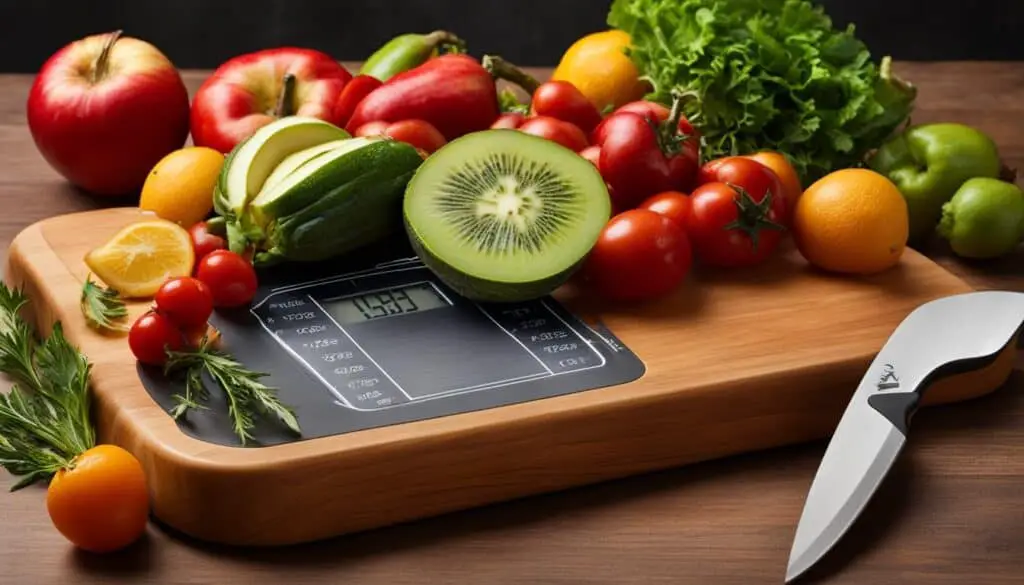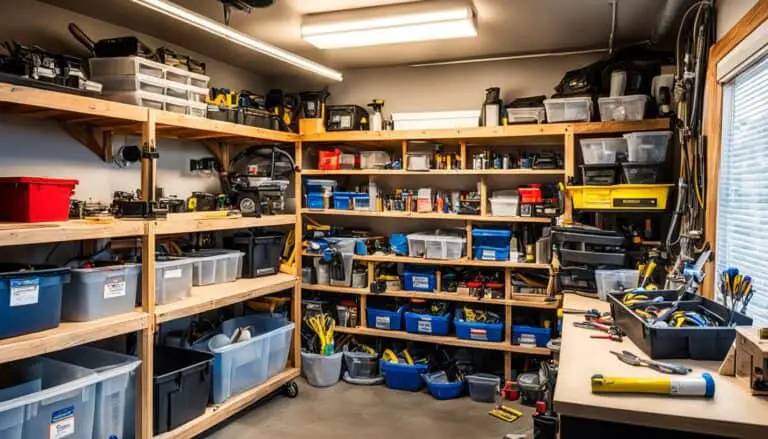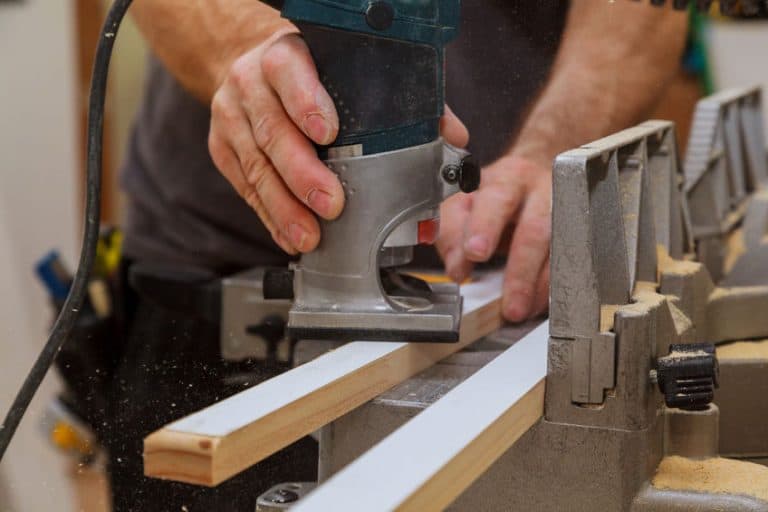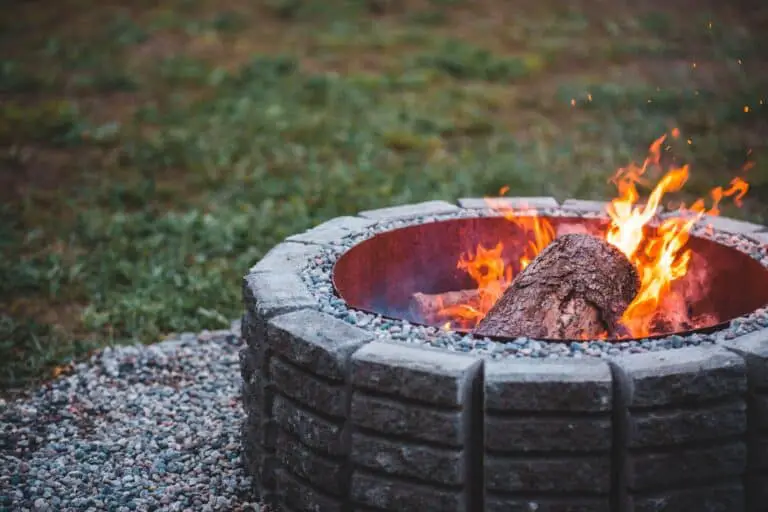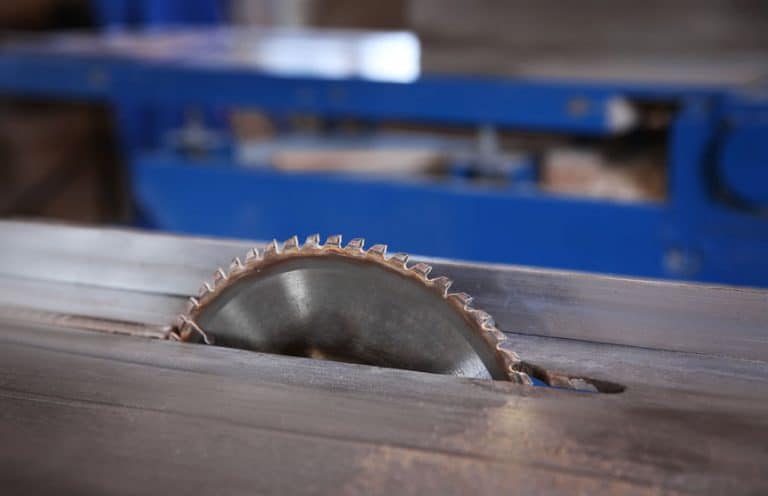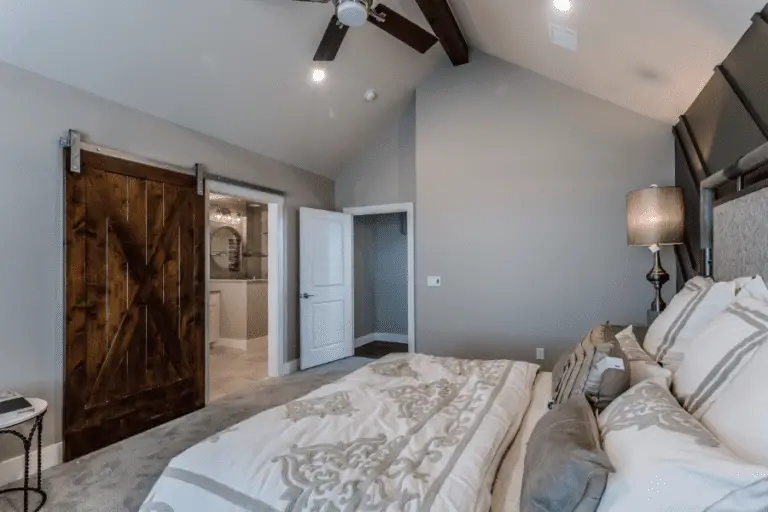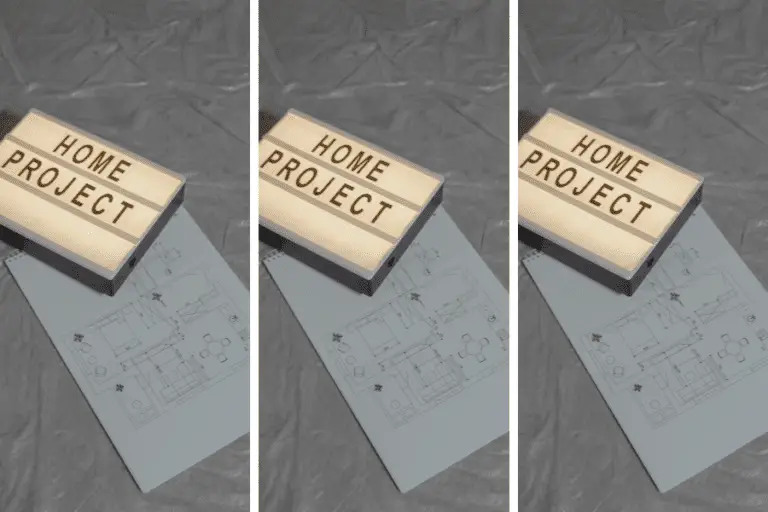A cutting board is not just a functional kitchen tool; it can also be a beautiful and unique design element that enhances the overall aesthetic of your kitchen. In this article, we will explore a variety of cutting board designs and styles to help you find the perfect one to elevate your kitchen space. From selecting the right wood to exploring minimalist styles, artistic engravings, innovative features, and unconventional shapes, we will cover all aspects of cutting board design. Whether you prefer a sleek and modern look or a rustic and natural feel, there is a cutting board design to suit your taste and enhance your culinary experience. Prepare to be inspired by the wide range of options available in the world of cutting board designs.
Key Takeaways:
- Explore a variety of cutting board designs to enhance your kitchen space
- Select the right wood for your cutting board based on aesthetics and durability
- Consider minimalist styles for a sleek and clutter-free kitchen
- Discover the practical benefits of end-grain cutting boards
- Make a statement with modern geometric cutting board patterns
The Art of Selecting the Perfect Wood for Your Cutting Board
When it comes to cutting boards, the type of wood used can make a significant impact on both the durability and aesthetic appeal of the board. In this section, we will delve into the art of selecting the perfect wood for your cutting board. We will discuss the importance of understanding wood hardness and durability, explore different types of wood and their aesthetic appeal, and provide tips on how to care for your wood cutting board to ensure its longevity. Whether you prefer a classic hardwood like maple or walnut or a more exotic wood with unique grain patterns, this section will guide you in making the right choice for your cutting board.
Understanding Wood Hardness and Durability
When choosing wood for your cutting board, it’s crucial to consider its hardness and durability. Hardwoods, such as maple, walnut, and cherry, are popular choices due to their strength and resistance to wear and tear. These woods are less likely to be damaged by knife marks and can withstand heavy use over time. On the other hand, softer woods like pine or fir may be prone to scratches and dents.
One way to determine wood hardness is through the Janka hardness test, which measures the force required to embed a steel ball into the wood. The higher the Janka rating, the harder the wood. Consider selecting a wood species with a Janka rating appropriate for cutting boards, typically around 1000 or higher.
The Aesthetic Appeal of Different Wood Types
Besides durability, the aesthetic appeal of different wood types is another important factor to consider when selecting a cutting board. Each wood species has its unique grain patterns, colors, and textures, which can add character and beauty to your kitchen. Some popular choices include:
- Maple: Known for its light, creamy color and subtle grain patterns, maple provides a classic and timeless look.
- Walnut: With its rich, dark brown color and striking grain variations, walnut offers a sophisticated and luxurious aesthetic.
- Cherry: Cherry wood features warm, reddish hues and a smooth, even grain, making it an elegant choice for cutting boards.
These are just a few examples, and there are many other wood species to explore, each with its unique charm. Consider the overall look and feel of your kitchen when selecting a wood type, ensuring it complements your existing decor or desired style.
Caring for Your Wood Cutting Board
To ensure the longevity of your wood cutting board, proper care and maintenance are essential. Here are some tips to help you keep your cutting board in top condition:
- Regularly clean your cutting board with warm soapy water after each use. Avoid soaking the board, as excessive moisture can cause warping.
- Periodically oil your cutting board to prevent drying and cracking. Food-grade mineral oil or beeswax is commonly used for this purpose.
- Avoid exposing your cutting board to extreme temperatures or prolonged sunlight, as this can cause the wood to warp or fade.
- When cutting meat or other strong-smelling ingredients, consider using a separate cutting board to prevent cross-contamination.
By following these simple care instructions, you can maintain the beauty and functionality of your wood cutting board for years to come.
| Wood Type | Hardness (Janka Rating) | Aesthetic Appeal |
|---|---|---|
| Maple | 1450 | Light, creamy color; subtle grain patterns |
| Walnut | 1010 | Rich, dark brown color; striking grain variations |
| Cherry | 950 | Warm, reddish hues; smooth, even grain |
You can see the different characteristics and ratings of popular wood types commonly used for cutting boards in the table above. Use this information as a guide to help you select the perfect wood that combines both durability and aesthetic appeal for your cutting board.
Minimalist Cutting Board Styles for a Sleek Kitchen
Minimalism has become a popular design trend in recent years, and it has also made its way into the world of cutting board designs. In this section, we will explore minimalist cutting board styles that are perfect for creating a sleek and clutter-free kitchen.
When it comes to minimalist cutting boards, simplicity is key. Opt for clean lines, understated details, and a focus on functionality and aesthetics. Choose cutting boards that seamlessly blend into your modern kitchen or add a touch of elegance to your minimalist space.
One classic minimalist design is a simple rectangular cutting board made from high-quality wood. These sleek and understated boards offer a timeless appeal and are perfect for any kitchen style.
Another minimalist option is a cutting board with clean lines and minimalist details. These cutting boards often feature geometric shapes, monochromatic color schemes, and sleek finishes. They add a touch of contemporary sophistication to your kitchen while prioritizing functionality.
To visualize these minimalist cutting board styles, take a look at the image below:
Incorporating minimalist cutting board styles into your kitchen design can help create a sleek and visually appealing space. Whether you have a sleek and modern kitchen or a minimalist kitchen with a touch of elegance, these cutting board designs will elevate your kitchen design and enhance your culinary experience.
Celebrating the End-Grain: The Beauty of Wood Fibers in Cutting Board Designs
End-grain cutting boards are renowned for their stunning aesthetic and unique design. These boards showcase the natural beauty of the wood fibers and create a visually captivating centerpiece in any kitchen.
The Practical Benefits of End-Grain Boards
But beyond their visual appeal, end-grain cutting boards offer a myriad of practical benefits. One of the key advantages is their self-healing properties. The orientation of the wood fibers in end-grain boards allows the knife to slide between the fibers rather than cutting across them. As a result, the board’s surface retains its integrity, and small knife marks close up on their own over time.
This self-healing property not only enhances the longevity of the cutting board but also ensures a hygienic environment. The closed wood fibers help prevent bacteria from seeping into the board, making it a safe and sanitary option for food preparation.
How End-Grain Enhances the Longevity of Your Knives
In addition to their self-healing properties, end-grain cutting boards are gentle on your knives. When the blade makes contact with the wood fibers, they separate and then come back together, leaving minimal damage to the knife’s edge. This preservation of the knife’s sharpness results in longer-lasting blades and reduces the frequency of sharpening or honing.
The combination of an end-grain cutting board and a high-quality knife creates a harmonious partnership, where both elements benefit from each other’s longevity. The wood fibers cradle the blade, protecting its edge, while the knife effortlessly glides through the cutting board without causing excessive wear or tear.
So, when you invest in an end-grain cutting board, you’re not only acquiring a beautiful piece of craftsmanship but also choosing a functional tool that enhances the performance and lifespan of your knives.
Modern Takes on Geometric Cutting Board Patterns
If you’re looking to add a bold statement to your kitchen, modern geometric cutting board patterns are the way to go. These contemporary cutting board designs feature eye-catching geometric shapes that combine form and function in a visually stunning way. From intricate hexagons and triangles to abstract patterns, these cutting boards will elevate your culinary space and add a touch of modernity to your kitchen.
Geometric cutting board patterns offer a unique opportunity to showcase your personal style and creativity. Whether you prefer clean lines and minimalist designs or enjoy more complex and abstract shapes, there is a modern geometric cutting board pattern that will suit your taste.
To give you a taste of the possibilities, here are a few examples of modern geometric cutting board patterns:
- An octagon-shaped cutting board that adds a contemporary touch to your kitchen.
- A triangular cutting board with bold, intersecting lines for a striking visual effect.
- A mosaic-inspired cutting board with a combination of geometric shapes in different colors of wood.
- A chevron pattern cutting board that creates a dynamic and visually appealing surface.
These modern cutting board designs not only serve as functional kitchen tools but also double as artistic pieces that enhance the overall aesthetic of your kitchen. Whether you want to add a contemporary touch to your kitchen or create a focal point with geometric shapes, these modern cutting board designs will bring a fresh and trendy look to your culinary space.
Custom Engravings and Inlays: Personalizing Your Cutting Board
Personalizing your cutting board is a great way to add a unique touch to your kitchen. By adding custom engravings and inlays, you can make your cutting board truly one-of-a-kind.
Monogramming for a Classic Touch
One popular way to personalize a cutting board is through monogramming. Whether it’s your initials, family name, or a special date, adding a monogram adds a personal and elegant element to your cutting board. It’s a classic touch that adds a sense of tradition and sophistication to your kitchen.
Adding Artistic Flair with Inlays
If you’re looking to make a bolder statement with your cutting board, consider adding artistic inlays. Inlays are decorative elements that are embedded into the surface of the cutting board, creating beautiful and eye-catching designs. They can be made from contrasting wood, metal, resin, or even marble, allowing for endless possibilities in terms of design and creativity. From intricate patterns to abstract motifs, inlays add an artistic flair to your cutting board, transforming it into a functional piece of art.
Whether you want to commemorate a special occasion, showcase your personal style, or simply add a touch of artistry to your kitchen, custom engravings and inlays are a fantastic way to personalize your cutting board and make it unique to you.
Cutting Boards with Innovative Features for the Home Chef
When it comes to the modern kitchen, cutting boards are no longer just simple surfaces for food preparation. They have evolved to include innovative features that enhance the culinary experience and make your time in the kitchen more efficient and enjoyable. In this section, we will explore cutting boards with cutting-edge designs and functionalities that cater to the needs of home chefs.
Boards with Integrated Compartments and Juice Grooves
One of the most convenient features of cutting boards with innovative designs is the integration of compartments and juice grooves. These cutting boards come with built-in compartments that allow you to organize your ingredients as you chop, preventing cross-contamination and saving you valuable time in the kitchen. Additionally, the inclusion of juice grooves helps to capture and contain the natural juices that come from meat, fruits, and vegetables, keeping your workspace clean and minimizing mess.
With integrated compartments and juice grooves, you can seamlessly transition between different ingredients without the need for multiple bowls or plates. This not only streamlines your food preparation process but also reduces the number of dishes you need to clean up afterwards.
When Cutting Boards Meet Technology: Incorporating Scales and Measurement Tools
Incorporating technology into cutting boards has become increasingly popular, especially for those who value precision and accuracy in their cooking. Cutting boards with built-in scales and measurement tools provide a convenient way to accurately measure ingredients while you prepare your meals. Whether you need to measure a specific weight or follow a recipe with precise measurements, these cutting boards have got you covered.
By eliminating the need for separate weighing scales and measuring cups, these innovative cutting boards simplify and streamline your cooking process. They provide a more efficient and organized workflow, allowing you to focus on the cooking itself rather than searching for different tools and measuring devices.
The image above showcases a cutting board with innovative features that include integrated compartments, juice grooves, and a built-in scale. This type of cutting board provides the ultimate convenience for home chefs, offering a complete and multifunctional workspace for all your food preparation needs.
Rustic Live-Edge Cutting Board Designs for a Natural Look
If you’re a fan of rustic and natural aesthetics, live-edge cutting board designs are the perfect choice for your kitchen. Live-edge boards, also known as natural-edge boards, feature the raw and untouched edge of the wood, giving them a unique and organic appeal. These cutting boards showcase the natural beauty of the wood and add a touch of nature indoors.
Live-edge cutting boards come in a variety of shapes and designs, allowing you to find the perfect piece that matches your kitchen decor. From rectangular boards with a single live-edge to irregularly shaped boards with multiple live-edges, there’s a wide range of options to choose from. Each board carries its own distinctive character, making it a standout piece in your kitchen.
The key to achieving the rustic charm with live-edge cutting boards lies in selecting the right wood. Look for natural wood varieties like maple, walnut, cherry, or acacia, which not only provide durability but also bring warmth and depth to your kitchen space. The natural grain patterns and knots in the wood add an authentic rustic touch to the overall design.
Whether you have a modern kitchen or a farmhouse-style decor, live-edge cutting boards effortlessly blend in and complement various interior styles. They add a cozy and inviting feel to your kitchen, creating a warm and welcoming atmosphere for your culinary adventures.
Incorporating live-edge cutting boards into your rustic kitchen decor is a simple and effective way to infuse natural elements into your space. These boards not only serve as functional kitchen tools but also double as stunning pieces of art that elevate your culinary environment.
Cutting Board Designs: Think Outside the Traditional Shapes
Break away from the traditional rectangular and square shapes with cutting board designs that push the boundaries of conventional shapes. In this section, we will explore cutting board designs that think outside the box and offer unique and unconventional shapes. From circular cutting boards to oval and freeform designs, we will showcase cutting boards that stand out and add a touch of creativity to your kitchen. If you’re looking to make a statement with your cutting board or simply want to have a bit of fun with your kitchen accessories, these non-traditional cutting board shapes are sure to impress.
When it comes to cutting boards, why limit yourself to traditional shapes when you can have something truly unique and eye-catching? Circular cutting boards not only provide an interesting visual element but also offer a practical advantage by allowing for easy rotation while cutting. The unconventional shape of an oval cutting board adds a touch of elegance to your kitchen, while still providing ample space for chopping and slicing. If you want a cutting board that truly stands out, consider a freeform design. These cutting boards defy convention with their irregular and unique shapes, adding a touch of artistic flair to your culinary space.
Unconventional cutting board shapes not only add visual interest to your kitchen but also serve as conversation starters during gatherings and parties. Imagine the surprise and delight on your guests’ faces when they see a circular or freeform cutting board on your countertop. These designs are not only functional but also showcase your personal style and creativity.
So go ahead, think outside the traditional shapes and explore the world of unconventional cutting board designs. Whether you choose a circular cutting board for its versatility, an oval cutting board for its elegance, or a freeform cutting board for its artistic expression, you’re sure to find a unique shape that perfectly suits your taste and enhances your kitchen decor.
Unique and Artistic Cutting Board Shapes to Adorn Your Kitchen
Cutting boards can be more than just functional kitchen tools; they can also be artistic pieces that add beauty and creativity to your kitchen. In this section, we will explore unique and artistic cutting board shapes that will adorn your kitchen. Drawing inspiration from nature and everyday objects, we will showcase cutting boards in shapes that go beyond the traditional. From leaf-shaped boards to whimsical animal designs, these cutting boards will bring a touch of artistry to your kitchen.
Inspiration from Nature and Everyday Objects
When it comes to cutting board designs, nature serves as a rich source of inspiration. Designers often draw from the graceful curves of leaves, the organic shapes of fruits and vegetables, or the intricate patterns found in natural landscapes. These nature-inspired cutting board shapes bring an element of serenity and beauty to your kitchen, making them a delightful addition to any culinary space.
Furthermore, everyday objects can offer unexpected inspiration for cutting board shapes. Items such as vintage keys, musical instruments, or even whimsical creatures can be transformed into unique and eye-catching cutting boards. These unconventional shapes add a playful and artistic touch to your kitchen decor, sparking joy and conversation with their imaginative designs.
Breaking the Mold: Circular, Oval, and Freeform Cutting Boards
In addition to nature-inspired and quirky designs, circular, oval, and freeform cutting boards have gained popularity for their distinctive and visually appealing shapes. Circular cutting boards, in particular, offer a sense of balance and harmony, fitting seamlessly into both modern and traditional kitchen aesthetics. Their continuous shape encourages smooth and efficient food preparation, while also adding an element of elegance to your culinary space.
Oval cutting boards, on the other hand, provide a unique and artistic alternative to rectangular or square boards. With their elongated shape, oval cutting boards offer a different surface area for chopping and slicing, accommodating a variety of cutting techniques. This unconventional shape adds visual interest to your kitchen and can be a statement piece on your countertop.
For those seeking truly one-of-a-kind cutting boards, freeform shapes offer endless possibilities. These boards break away from traditional geometric constraints, allowing designers to unleash their creativity and craft cutting boards that resemble abstract art. From irregular edges to asymmetrical forms, freeform cutting boards add a touch of whimsy and uniqueness to your kitchen, making them an ideal choice for those who appreciate expressive and boundary-pushing design.
Whether you choose a cutting board with a nature-inspired shape, an unconventional design inspired by everyday objects, or opt for circular, oval, or freeform cutting boards, these unique and artistic shapes will undoubtedly become captivating focal points in your kitchen.
Eclectic Mix: Combining Woods for Stunning Visual Contrast
Mixing different wood tones and textures can create stunning visual contrast in cutting board designs. When it comes to cutting boards, the use of contrasting woods can elevate the overall aesthetic and add a touch of uniqueness to your kitchen. By selecting woods with varying colors, grains, and textures, you can create cutting boards that stand out as design elements while still serving their functional purpose.
Matching Wood Tones throughout Your Kitchen Decor
One of the key considerations when incorporating cutting boards with wood contrast is to ensure that the different wood tones match well with the existing decor of your kitchen. By bringing in cutting boards that complement the color palette and style of your kitchen, you can create a cohesive and harmonious look.
For example, if your kitchen features warm tones and earthy colors, you may opt for cutting boards crafted from woods like walnut or cherry, which possess rich, reddish-brown hues. These cutting boards will blend seamlessly with the existing decor and create a sense of visual continuity.
On the other hand, if your kitchen has a modern and contemporary design, you may choose cutting boards made from lighter woods such as maple or birch, which have pale, creamy tones. These cutting boards will add brightness and contrast to the space, creating a fresh and modern aesthetic.
The Art of Wood Blending in Cutting Board Craftsmanship
Blending different woods is an art in cutting board craftsmanship. Skilled artisans can create intricate designs by carefully selecting and combining wood species with complementary colors and grains. This technique allows for the creation of cutting boards that showcase the beauty and complexity of wood in unique and captivating ways.
From mosaic-like patterns featuring a mix of dark and light woods to geometric designs with alternating strips of contrasting grains, there are endless possibilities for creating visually striking cutting boards through wood blending.
Whether you prefer a subtle blend of similar wood tones or a bold juxtaposition of contrasting colors, wood blending in cutting board craftsmanship offers an opportunity to showcase the natural beauty of different wood species and create cutting boards that are not only functional but also works of art.
The Exotic Wood Collection: Rare Woods for Distinguished Tastes
For those with distinguished tastes, exotic wood cutting boards offer a luxurious and unique option. In this section, we will explore the exotic wood collection and showcase cutting board designs made from rare wood species. From zebrawood to Brazilian rosewood, these rare woods have distinct characteristics that set them apart and add an exclusive touch to your kitchen.
We will discuss the beauty and craftsmanship of these cutting board designs, as well as the sustainable sourcing of these rare woods. If you’re looking for a cutting board that stands out and makes a statement in your kitchen, the exotic wood collection is sure to impress.
| Wood Species | Characteristics |
|---|---|
| Zebrawood | Distinctive grain patterns resembling zebra stripes |
| Brazilian Rosewood | Rich, dark color with a beautiful reddish hue |
| Teak | Durable and resistant to moisture and humidity |
| Purpleheart | Vibrant purple color that deepens with age |
The beauty and craftsmanship of these cutting board designs elevate them to more than just kitchen tools – they become works of art. The sustainable sourcing of these rare woods ensures that your cutting board is not only visually stunning but also environmentally conscious.
Experience the elegance and exclusivity of the exotic wood collection by adding one of these rare wood cutting boards to your kitchen. Each piece is uniquely crafted, showcasing the natural beauty of these rare wood species. Whether you’re a culinary enthusiast or a design aficionado, an exotic wood cutting board is sure to become a conversation piece in your kitchen.
Marble and Alternative Materials as Cutting Board Surfaces
While wood is the most common material for cutting boards, there are alternative materials, such as marble, that offer unique advantages and aesthetics. Marble cutting boards have become increasingly popular due to their elegant appearance and cool surface, which makes them ideal for pastry chefs and bakers.
Using alternative materials in cutting board designs allows for creativity and customization. Whether you prefer the classic beauty of marble or want to explore other options, such as glass, bamboo, or composite materials, there are a variety of choices available to suit your needs and style.
When selecting alternative materials for cutting boards, it is important to consider their durability, maintenance requirements, and impact on knife sharpness. Each material has its own care instructions and considerations, ensuring that your non-wood cutting board remains in optimal condition for years to come.
Maintaining and Caring for Non-Wood Cutting Boards
Caring for non-wood cutting boards is essential to keep them hygienic and in good condition. Here are some general care tips for different types of alternative materials:
- Marble: Use a gentle cleanser and avoid harsh chemicals that can damage the surface. Clean stains and residue with a mixture of water and baking soda. Avoid placing hot pots or pans directly on the marble surface to prevent discoloration.
- Glass: Wash with warm, soapy water and avoid abrasive scrubbers that can scratch the surface. Glass cutting boards can also be sanitized in the dishwasher.
- Bamboo: Clean with warm water and mild soap. Apply mineral oil occasionally to maintain the integrity of the bamboo and prevent cracking.
- Composite materials: Follow the manufacturer’s instructions for cleaning and maintenance. Some composite cutting boards are dishwasher-safe, while others require handwashing.
It is important to note that each material may have specific care requirements, so always refer to the manufacturer’s instructions for best practices.
Marble: A Cool Surface for Pastry Chefs and Bakers
Marble cutting boards offer a unique advantage for pastry chefs and bakers. The cool surface of marble helps to keep dough and pastry ingredients at a lower temperature, minimizing the risk of butter melting and resulting in more consistent and flaky baked goods.
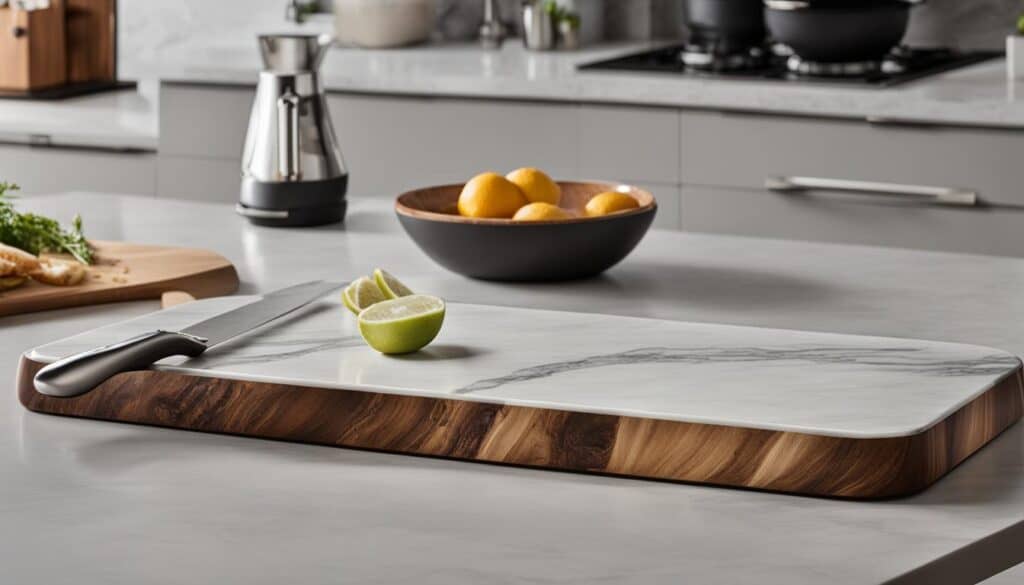
The smooth and non-porous surface of marble also makes it easier to work with sticky dough and prevents excessive flouring. Additionally, marble cutting boards are naturally resistant to heat, making them suitable for rolling out hot pastry or sugar work.
When using a marble cutting board, it is important to keep in mind that it can dull knives more quickly than wood or other materials. To prevent excessive wear on your knives, it is recommended to use a separate cutting board for ingredients that require less delicate knife work.
In conclusion, considering alternative materials, such as marble, in cutting board designs offers unique advantages and aesthetics. Whether you choose marble or other non-wood materials, proper care and maintenance will ensure that your cutting board remains functional and visually appealing in your kitchen.
Reclaimed Wood Cutting Boards: Upcycle with Style
If you’re passionate about sustainability and upcycling, reclaimed wood cutting boards are a perfect choice. These cutting boards not only add a touch of rustic charm to your kitchen but also contribute to reducing waste and promoting eco-friendly practices.
Upcycling is the process of repurposing discarded materials, in this case, reclaimed wood, to create new and unique products. Reclaimed wood cutting boards are made from salvaged wood that has been carefully sourced from old barns, factories, or other structures.
By giving new life to old wood, reclaimed wood cutting boards bring character, history, and a sense of environmental responsibility to your kitchen. Each board tells a story and carries the marks and imperfections that make it truly one-of-a-kind.
The beauty of reclaimed wood lies in its rich textures, unique grain patterns, and weathered appearance. No two cutting boards are exactly alike, making them a statement piece in your culinary space.
Using reclaimed wood for cutting boards is not only aesthetically pleasing but also a sustainable choice. By repurposing old wood, you are reducing the demand for new timber, minimizing deforestation, and helping to conserve natural resources.
When selecting a reclaimed wood cutting board, consider the type of wood used and its characteristics. Some popular options include reclaimed oak, pine, or maple. Each wood species has its own unique qualities, such as hardness, durability, and color variation.
It’s important to care for your reclaimed wood cutting board to ensure its longevity. Clean it gently using a mild soap and warm water, and dry it thoroughly after each use. Apply a food-safe mineral oil periodically to prevent the wood from drying out.
Whether you want to minimize waste or simply appreciate the charm of reclaimed materials, reclaimed wood cutting boards offer a sustainable and stylish option for your kitchen. Upcycle with style and make a statement with these eco-friendly cutting board designs.
Styling Your Kitchen with Functionally Decorative Cutting Boards
Cutting boards can be more than just practical tools in your kitchen; they can also serve as functional and decorative elements. When styled appropriately, cutting boards can enhance the overall aesthetic of your kitchen while still maintaining their usefulness. In this section, we will explore different ways to style your kitchen with cutting boards, combining form and function to create visually appealing displays.
Display Tips for Combining Form and Function
When it comes to styling your kitchen with cutting boards, there are several display tips you can follow to achieve a harmonious balance between form and function:
- Showcase a Variety: Display cutting boards in different shapes, sizes, and materials to create visual interest. Mix wooden cutting boards with marble or other alternative materials for a textured and diverse display.
- Coordinate Colors: Consider the color scheme of your kitchen and choose cutting boards that complement or contrast with the existing decor. A cohesive color palette will enhance the overall aesthetic appeal.
- Vary Heights and Orientations: Create dimension and visual intrigue by arranging cutting boards at varying heights and orientations. Place some boards vertically against the backsplash or lean them against the kitchen wall for an artful arrangement.
- Combine with Other Kitchen Accessories: Incorporate other kitchen accessories such as utensils, bowls, or cookbooks alongside your cutting boards to create a curated display that showcases your culinary interests.
By following these display tips, you can showcase your cutting boards as both functional tools and decorative elements, elevating the overall design of your kitchen.
Curating a Cutting Board Collection as Kitchen Art
Curating a cutting board collection is a creative way to turn these functional tools into kitchen art. Treat your cutting boards as unique pieces and display them as focal points in your kitchen. Here are some ideas for curating a cutting board collection:
- Theme-Based Collection: Create a collection of cutting boards that follow a specific theme, such as a rustic farmhouse aesthetic or a coastal-inspired design. This curated approach will give your kitchen a cohesive and personalized look.
- Artistic Arrangement: Arrange your cutting boards on the wall or countertop in an artistic and visually pleasing way. Consider creating a symmetrical display or arranging them in a pattern that complements the overall kitchen design.
- Rotate and Refresh: Change up your cutting board display regularly to keep your kitchen decor fresh and interesting. Swap out cutting boards seasonally or whenever you feel the need for a new look.
- Focus on Craftsmanship: Curate a collection of cutting boards that showcases different craftsmanship techniques, such as hand-carved designs or intricate inlays. This will emphasize the artistic value of the cutting boards.
By curating a cutting board collection, you can transform your kitchen into a gallery of functional art, showcasing your love for cooking and design.
Conclusion: Your Guide to Innovative Cutting Board Designs
In conclusion, this article has explored a wide range of innovative cutting board designs that can enhance your kitchen space. By following this guide, you can find the perfect cutting board design that best suits your style and kitchen needs.
We started by discussing the importance of selecting the perfect wood for your cutting board, considering factors such as wood hardness, durability, and aesthetic appeal. From classic hardwoods to exotic wood species, the choice of wood can make a significant impact on both the functionality and visual appeal of your cutting board.
Next, we explored various design elements, including minimalist styles, end-grain boards, geometric patterns, custom engravings, innovative features, rustic live-edge designs, unconventional shapes, and artistic designs inspired by nature and everyday objects. Each of these design ideas offers a unique way to elevate your kitchen and make a statement with your cutting board.
Whether you’re a professional chef or a home cook, these innovative cutting board designs provide endless possibilities for transforming your kitchen into a functional and visually stunning space. So go ahead and explore the world of cutting board designs to find the perfect one that reflects your style, enhances your culinary experience, and brings a touch of beauty to your kitchen.
FAQ
What should I consider when selecting the wood for my cutting board?
When choosing the wood for your cutting board, it’s important to consider factors like wood hardness and durability. Additionally, the aesthetic appeal of different wood types should also be taken into account. Proper care and maintenance are essential for prolonging the lifespan of your wood cutting board.
Are there minimalist cutting board styles available?
Yes, minimalist cutting board styles are a popular choice for those who prefer a sleek and clutter-free kitchen. These designs prioritize functionality and aesthetics, featuring clean lines and minimalist details.
What are the advantages of using end-grain cutting boards?
End-grain cutting boards have self-healing properties and can help preserve the sharpness of your knives. The unique beauty of wood fibers in end-grain boards also adds to their appeal.
Are there cutting board designs with geometric patterns?
Yes, there are modern cutting board designs that feature geometric patterns, such as hexagons, triangles, and abstract shapes. These patterns combine form and function, creating visually stunning cutting boards.
How can I personalize my cutting board?
Cutting boards can be personalized through custom engravings and inlays. Classic monogramming and artistic inlays using contrasting wood, metal, resin, or even marble can add a unique touch to your cutting board.
What innovative features can cutting boards have?
Cutting boards with innovative features may include integrated compartments and juice grooves, which help with ingredient organization and prevent cross-contamination. Some cutting boards also incorporate scales and measurement tools for precise ingredient measurement.
Are there cutting boards with rustic live-edge designs?
Yes, live-edge cutting boards are perfect for those who prefer rustic and natural aesthetics. These boards showcase the natural curves and edges of the wood, adding a touch of nature to your kitchen.
Can cutting boards come in non-traditional shapes?
Yes, cutting board designs can push the boundaries of conventional shapes. Circular, oval, and freeform cutting boards offer unique and eye-catching options for those looking to make a statement in their kitchen.
Are there cutting boards available in artistic shapes?
Yes, cutting boards can be designed in unique and artistic shapes inspired by nature and everyday objects. From leaf-shaped boards to whimsical animal designs, these cutting boards add a touch of artistry to your kitchen.
Can different wood tones be mixed in cutting board designs?
Yes, blending different wood tones and textures in cutting board designs can create stunning visual contrast. This can be achieved by incorporating different wood species or using techniques to blend wood tones within a single cutting board.
Can cutting boards be made from exotic woods?
Yes, cutting boards can be crafted from rare and exotic wood species like zebrawood and Brazilian rosewood. These woods offer unique characteristics and add a touch of luxury to your kitchen.
Is marble used as a cutting board surface?
Yes, marble and other alternative materials can be used as cutting board surfaces. Marble cutting boards, in particular, are favored by pastry chefs and bakers due to their cool surface, which helps with working with dough.
Are there cutting boards made from reclaimed wood?
Yes, cutting boards crafted from reclaimed wood are popular among those who value sustainability and upcycling. These boards bring character and a sense of environmental responsibility to your kitchen.
How can I style my kitchen with cutting boards?
Cutting boards can be used as both functional and decorative elements in your kitchen. They can be displayed in various ways to enhance the overall aesthetic appeal and can be curated as a collection to reflect your personal style and culinary passion.
Where can I find innovative cutting board designs?
This article has covered a wide range of cutting board design ideas, including wood selection, minimalist styles, end-grain boards, geometric patterns, personalization options, innovative features, rustic live-edge designs, unconventional shapes, unique artistic shapes, wood blending, exotic wood options, alternative materials, reclaimed wood, and decorative styling. By following this guide, you can explore various sources and retailers to find the cutting board design that best suits your style and kitchen needs.


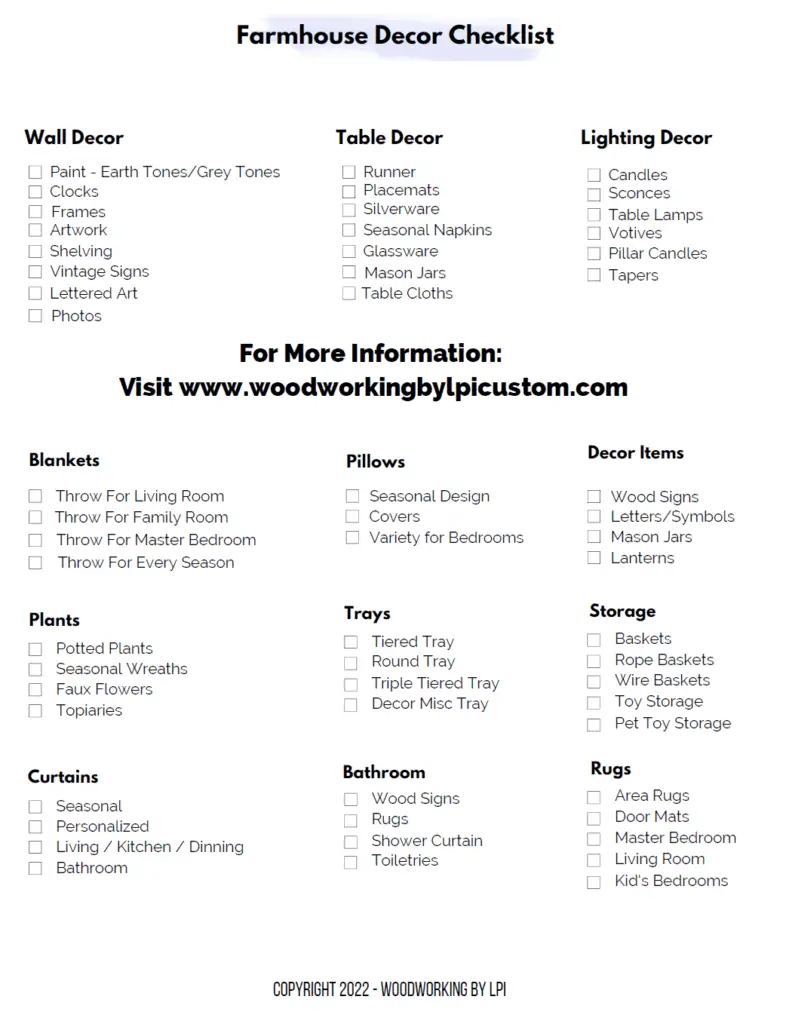
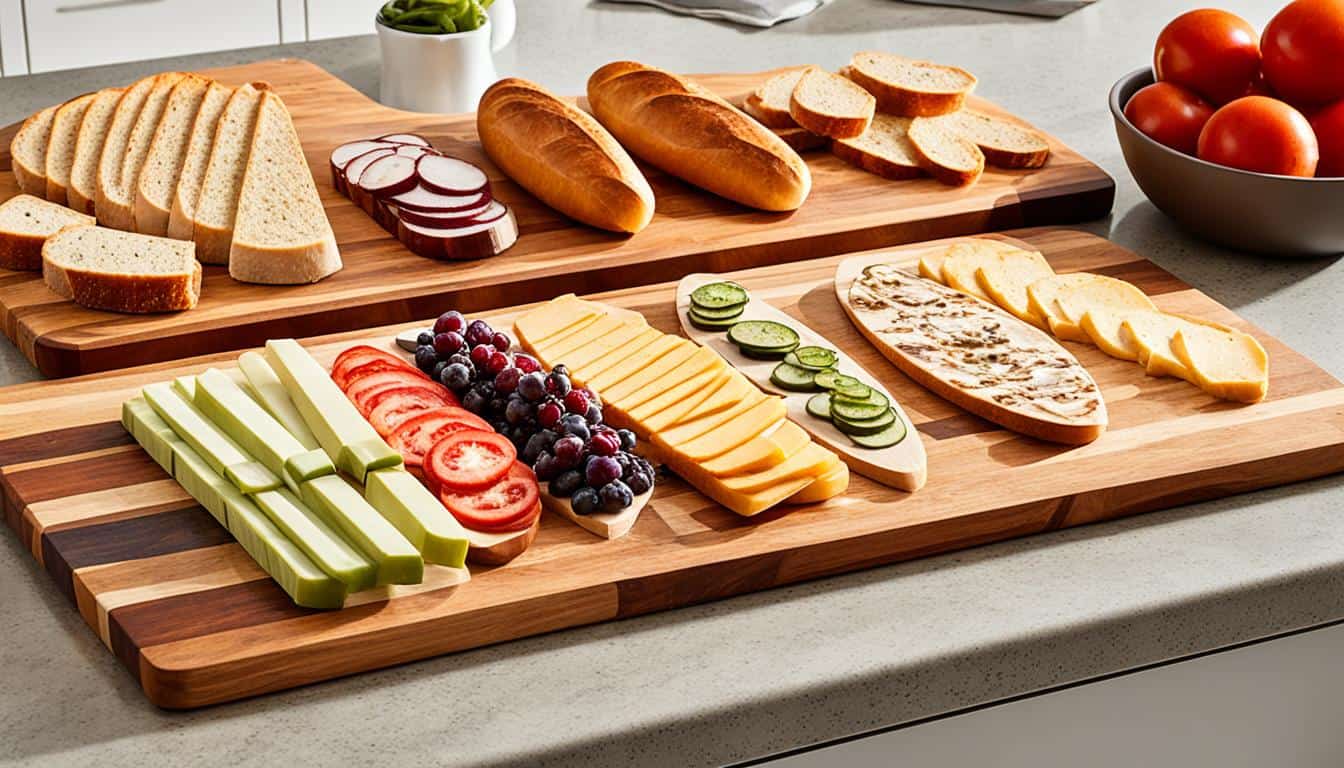
![Bamboo Cutting Boards for Kitchen [Set of 3] Wood Cutting Board for Chopping Meat, Vegetables, Fruits, Cheese, Knife Friendly Serving Tray with Handles](https://m.media-amazon.com/images/I/41l-LAYk+mL._SL160_.jpg?tag=wwblpi-20)



